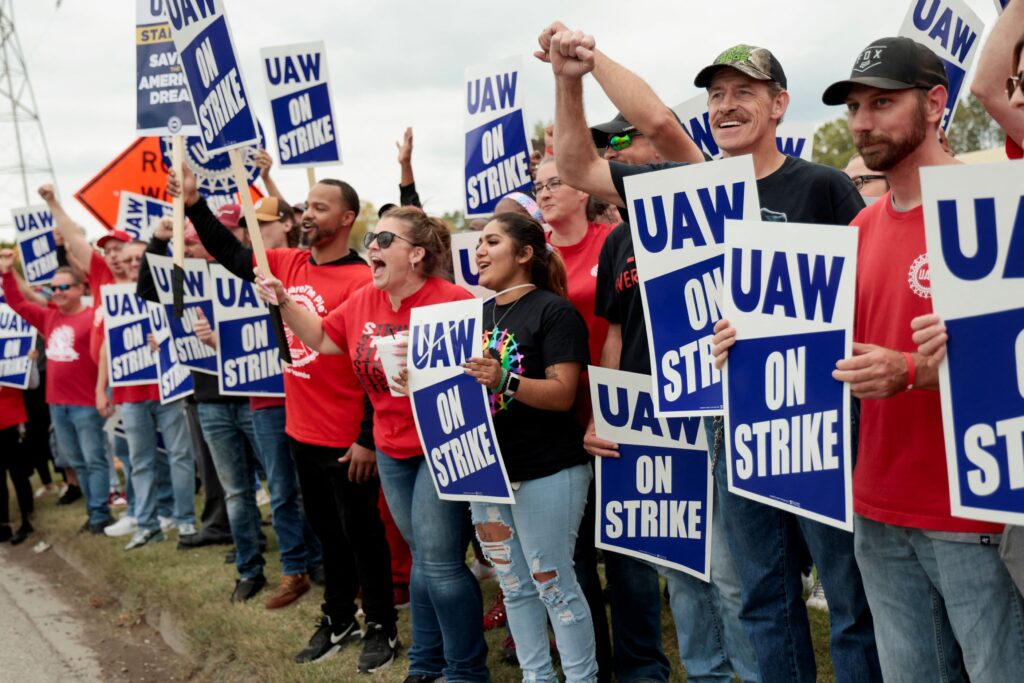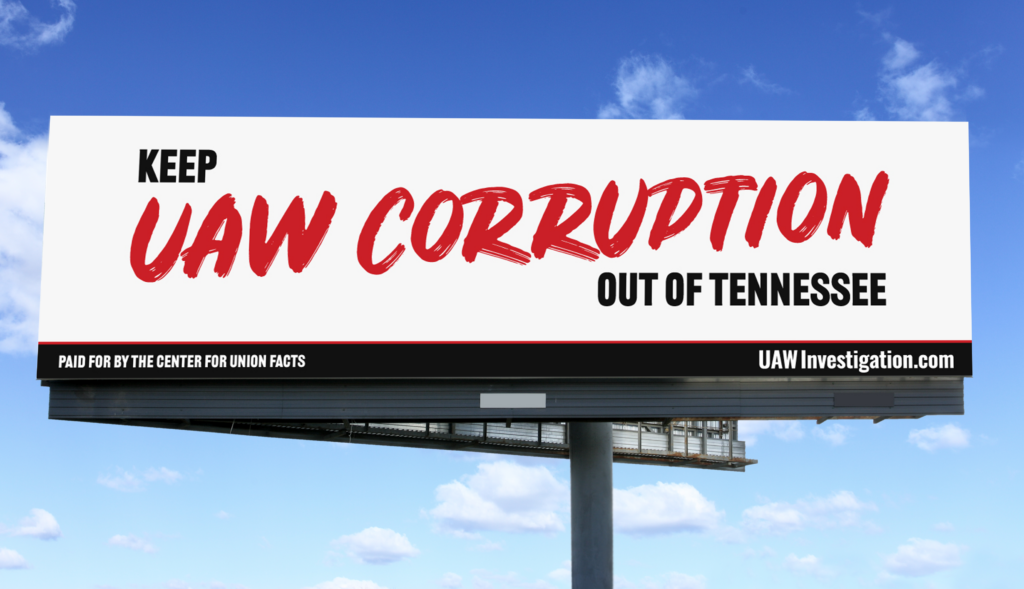Union Organizing is on the Decline
Despite a friendly NLRB tipping the scales, workers are increasingly rejecting labor organizers’ underhanded tactics.
This essay originally appeared in Law & Liberty on June 17, 2024 as “The Continuing Decline of the Private-Sector Union” (here). Thanks to Real Clear Policy (here), Real Clear Markets (here), and Legal Insurrection (here)!
Union representation in the private sector, which since 1935 has been determined by employee choice in secret-ballot elections conducted by the National Labor Relations Board, has fallen precipitously in recent decades. This is due in part to the decline of traditional union strongholds—manufacturing and heavy industry–in union-friendly states such as Michigan and Ohio, the large-scale siting of auto plants (and other manufacturing facilities) in southern states with right-to-work laws, and the growing obsolescence of the New Deal’s collective-bargaining model in an era of an educated, largely mobile, white-collar workforce that enjoys significant protections by state and federal laws—without having to pay union dues.
As private-sector employees increasingly reject union organizing campaigns, and as unions continue to lose representation elections, the anti-employer NLRB has found new ways to force unions on unwilling employees and impose bargaining obligations on employers without the benefit of an election, contrary to the National Labor Relations Act. Recent events involving the United Auto Workers union illustrate these trends. Organizing workers in southern states will be a challenge, even with the tag team-style assistance of the NLRB.
For a variety of reasons, the portion of the private-sector workforce represented by a union has dramatically declined from a peak of around 35 percent in 1954 to a mere six percent in 2023—the lowest percentage since the NLRA was passed. The union membership rate of government employees, in contrast, is more than five times greater, at 32.5 percent. The NLRA, intended to remedy the supposed imbalance of “bargaining power” between capital and labor, doesn’t even cover government workers, who (in theory at least) serve the public.
Despite union rhetoric espousing “industrial democracy,” the irony is that public school teachers and government bureaucrats are far more likely to be unionized than factory workers and other blue-collar occupations. In terms of members, the UAW, once an industrial powerhouse, is dwarfed by the National Education Association and other public-sector unions, such as AFSCME and SEIU. The decline of the U.S. auto industry parallels the shrinkage of Detroit’s population from 1.8 million residents in 1950 to about 630,000 today. The ebbing fortunes of the corruption-plagued UAW mirror those of the domestic auto industry—and the Motor City itself. Over the past decade, more than a dozen UAW officials were convicted of crimes, including two past presidents.
At the present time, there are more auto workers unrepresented by the UAW in southern and midwestern states—mostly employed by foreign auto makers–than there are unionized auto workers employed by the Big Three in Detroit. As I wrote here in 2016, the reasons for organized labor’s decline in the private sector include
the reduced role of manufacturing in the U.S. economy, globalization, the rise of technology, an increasingly educated workforce, the availability of illegal immigrant labor, a mobile workforce that places less value on seniority rights, state and federal labor laws that have lessened the importance of union-negotiated job security, and competition by right-to-work states.

Moreover, some employees simply don’t want to join a union, especially one with a sordid record of corruption. The UAW’s ability to organize workers in right-to-work states will be critical to regaining its prior stature and influence. This will be a challenge, since many blue-collar workers in red states will likely not find the militant UAW’s progressive politics appealing.
Firebrand UAW president Shawn Fain, who wears t-shirts with slogans like “Eat the Rich,” has made organizing auto workers at non-union plants a top priority. Because in recent decades auto makers have generally avoided opening plants in union-friendly Michigan and adjacent states, there are many non-union plants in the U.S. for the UAW to target. According to the Wall Street Journal, “Automakers invested billions of dollars in new factories in states such as Georgia, Kentucky and Tennessee, accelerating the industry’s move to the South.” The UAW, in turn, is investing $40 million over two years to organize auto plants in Texas, Mississippi, Alabama, Georgia, and South Carolina.
Most of the non-union auto plants are operated by foreign-owned companies such as Hyundai, Toyota, Nissan, Honda, Mazda, Volvo, and Subaru, some of which have previously successfully repelled UAW organizing campaigns. The plants were built in right-to-work states to avoid the UAW. Looking at the Big Three’s disastrous history with the UAW—forfeiting management prerogatives, hobbling themselves with inefficient work rules, paying above-market wages and benefits, etc.—the foreign-owned companies are highly-motivated to avoid the same trap.
Many observers viewed the UAW’s recent election victory at Volkswagen’s 4,300-worker plant in Chattanooga, Tennessee—following two prior defeats there–as a harbinger that the union’s fortunes were improving under Fain’s leadership. Last year, Fain oversaw a successful strike against the Big Three auto makers in Detroit. The UAW’s win in Chattanooga was notable because Tennessee is a right-to-work state, the election was opposed by Tennessee Governor Bill Lee (and five other Republican southern governors), and the UAW had never previously prevailed at a foreign-owned auto plant in the South.

However, union boosters’ hopes were dashed a month later, when in May workers at a Mercedes-Benz plant in Alabama rejected the UAW by a resounding margin of 56 to 44 percent, with an employee turnout of more than 90 percent. Was the successful Volkswagen election a fluke, or will the UAW eventually be able to prevail in Alabama? Only time will tell. In the meantime, the UAW has filed unfair labor practice charges with the NLRB against Mercedes-Benz, claiming that the automaker interfered in the election by disciplining union supporters, making coercive statements to employees, and forcing workers to attend meetings urging them to vote against union representation. Mercedes-Benz denies the charges.
If the NLRB concludes that the charges have merit, it could order a new election. As explained below, the NLRB appears eager to enlarge its remedial powers, albeit at the expense of sacrificing the policy of secret ballot elections. Despite the NLRA’s longstanding commitment to honoring employees’ free choice regarding union representation, the NLRB has—under Democratic administrations—become a devoted ally of organized labor, and this is certainly true under President Joe Biden. Traditionally, employers have not been required to “recognize” or bargain with a union unless and until the union has won a secret-ballot certification election. This is to preserve the employees’ right of free choice.
To the same end, the remedy for an election tainted by an employer’s commission of “unfair labor practices” (as determined by the pro-union NLRB) was generally to hold a new election—except in rare cases of “egregious” unfair labor practices that destroyed the union’s majority support among the employees. When that happened, the NLRB could issue a “bargaining order” against the employer, even in the absence of a certified election in favor of the union. This rarely-invoked rule, based on the Gissel Packing case, had been in effect since 1969.
Winning elections is difficult and expensive, in both politics and the workplace. Unions prefer to demand recognition based on merely showing the employer “authorization cards” purportedly signed by a majority of employees. This is a shortcut around secret ballot elections, which are favored by employers as the most reliable indicator of their employees’ preferences. Determining union representation based on authorization cards is like replacing political elections with public opinion polls; the most reliable indicator of free choice in both cases is a secret ballot cast in a fair election. Authorization cards can, after all, be procured through coercion, intimidation, and misrepresentations.
Last year, the NLRB issued a controversial—some say radical–decision in a case (Cemex Construction Materials) holding that an employer may be ordered to bargain with a union, in the absence of a certified election, if it declines to recognize a card showing and then commits even a single unfair labor practice. In other words, the NLRB has adopted a legal theory that could impose union representation on employees who never voted in favor of it. This is the opposite of honoring free employee choice.
This decision increases the legal risk for employers who decline to recognize a union based on a showing of cards; the union’s subsequent filing of an unfair practice charge could result in a bargaining order, even in the absence of a certification election (or, as in Cemex, an election that the union lost). The NLRB’s General Counsel, Jennifer Abruzzo, a progressive union advocate who previously represented the Communications Workers of America, is aggressively applying the Cemex decision to punish employers who refuse to recognize a card showing by the union—ignoring the NLRA’s secret ballot election requirement.
In terms of organizing foreign-owned non-union auto plants in southern states, UAW President Shawn Fain has his work cut out for him, but he has the advantage of an NLRB willing to bend the legal rules in favor of compelling recognition of unions—and imposing union representation on employees–without elections. Of course, the leadership and direction of the NLRB could change depending on the results of another election—the one scheduled for November 5.

































